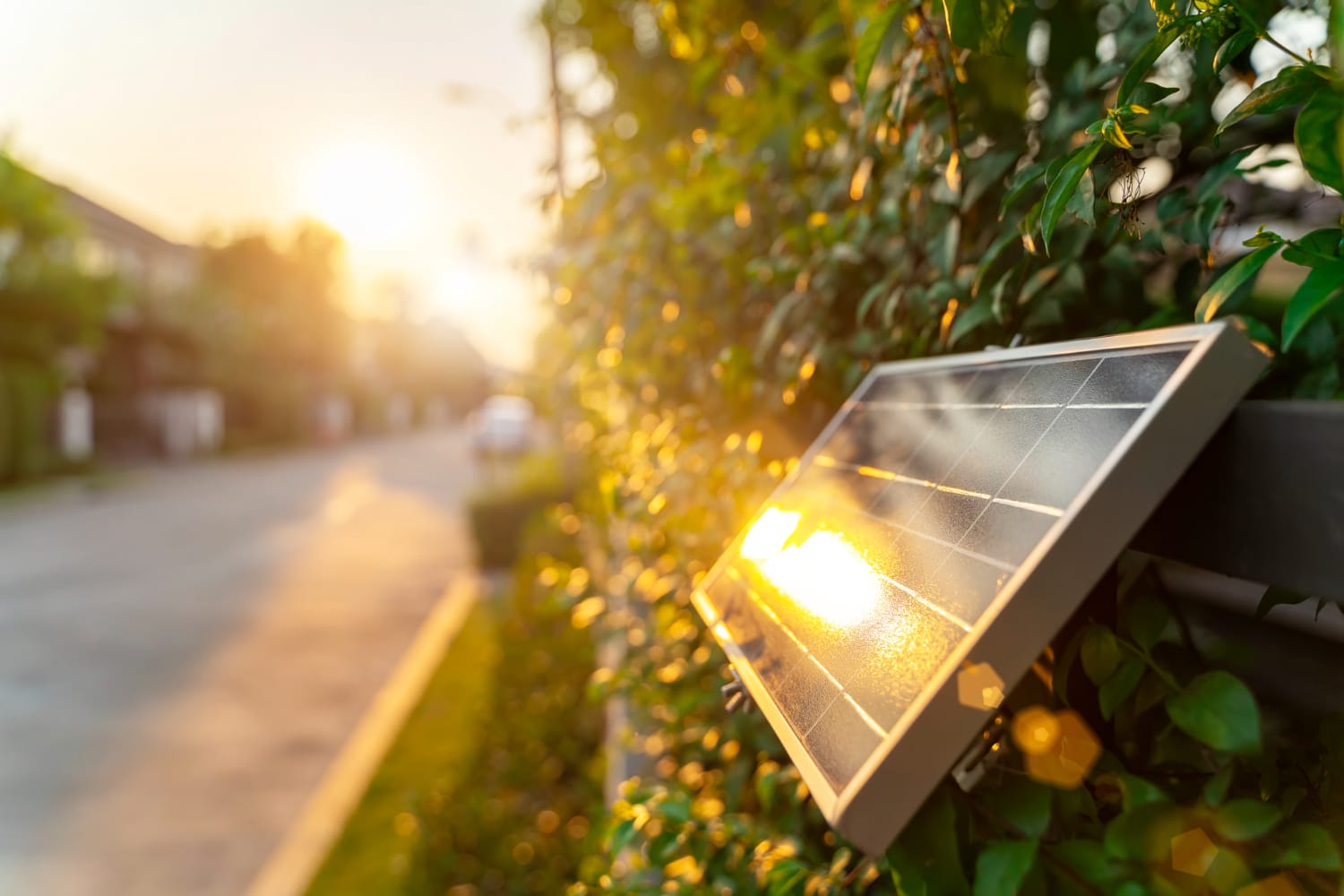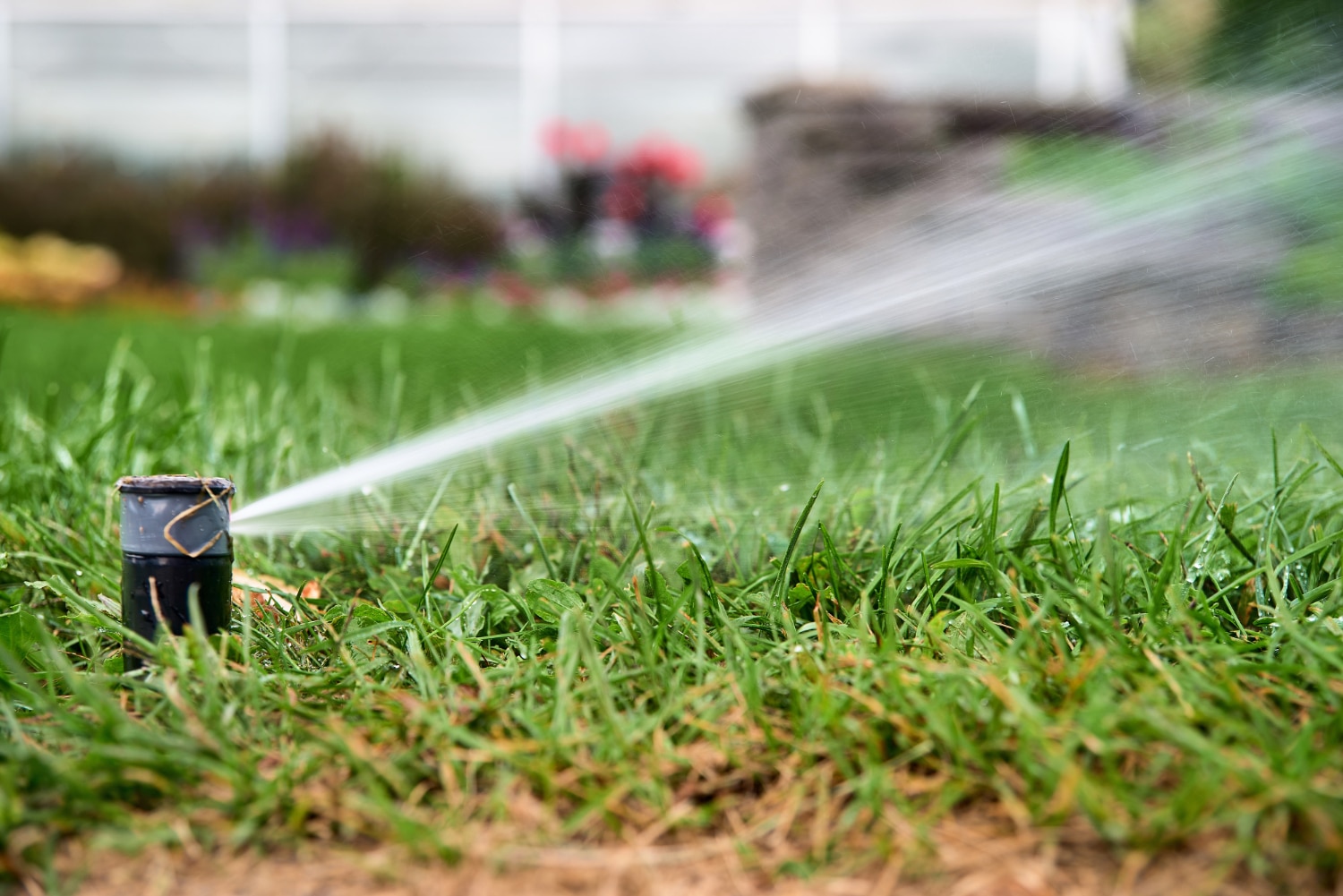Solar landscape lighting adds beauty and safety to outdoor spaces, using the sun’s energy to power up during the day and shine at night. But how much sunlight does this lighting need to work well?
Solar lights typically need 4 to 10 hours of direct sunlight to charge fully but this amount can change based on the type of light and its battery size. Bigger lights or those with more features might need more sun time to store enough power. For better results, choose sunny spots for your solar landscape lighting.
Basics of Solar Landscape Lighting
Solar landscape lights have various parts that turn sunlight into power. Let’s look at how they work and what makes them tick.
How Solar Lights Function
The solar panel sits on top and soaks up the sun’s rays, and inside, there’s a battery that stores this power. When it gets dark, a sensor turns on the light, and the stored energy powers the bulb all night. On sunny days, they charge faster and shine brighter but even on cloudy days, they can still charge a decent amount.
The Role of Photovoltaic Cells
Photovoltaic (PV) cells are the magic behind solar lights. These cells are made of silicon and other materials and when sunlight hits them, they create an electric current. PV cells are grouped to form a solar panel, and more cells mean more power. As sunlight shines on the panel, electrons start to move and this movement creates electricity. The electricity then charges the battery for later use. The quality of the cells affects how well the light works and better cells mean more efficient power production.
Sunlight Requirements for Optimal Performance
Solar landscape lights need sunlight to work well and the amount of available sunlight will affect how bright and long-lasting the lights are at night.
Importance of Direct Sunlight
Direct sunlight is key for solar lights to work their best and most solar lights need 4-10 hours of direct sun each day, allowing them to fully charge their batteries.
Placing lights in spots with no shade gives the best results. South-facing areas often get the most sun in the Northern Hemisphere, while east or west-facing spots can also work well. Solar panels should face the sun directly so try to angle them towards the sky to help catch more rays.
Solar Light Performance in Varying Weather Conditions
Weather plays a big role in how well solar lights work. Sunny days are ideal but they can still charge on cloudy days. On cloudy days, solar lights may only get 25-50% of their normal charge which can make them dimmer or not last as long at night.
Rain doesn’t stop solar lights from working, however, heavy cloud cover does reduce their efficiency. In winter, shorter days mean less charging time and snow can block sunlight too.
Managing Shaded Areas and Indirect Light
Shade can impact how well solar lights work and trees, buildings, and other objects can block the sunlight. It’s recommended to move solar lights to sunnier spots or:
- Use lights with larger solar panels
- Pick models made for low-light areas
- Add reflective surfaces nearby to bounce more light to the panel
Some newer solar lights can work with indirect light but won’t be as bright as those in full sun. If your backyard or garden is in permanent shade, traditional wired lights might be a better choice.
Solar Light Installation and Positioning
Proper installation and positioning of solar lights are key for optimal performance. The right setup ensures maximum sunlight exposure and effective illumination.
Selecting the Best Location
Ensure solar lights are in spots that get plenty of direct sunlight, preferably south-facing areas. Avoid shady spots under trees or near buildings, and for pathway lights, space them 6-8 feet apart, placing accent lights 10-15 feet apart.
Check the area throughout the day to spot any shadows and move lights if needed to catch more sun. Consider using remote solar panels for lights in shadier spots as these allow for flexible positioning of the light fixtures.
Light Sensors and Artificial Light Sources
Most solar lights have built-in sensors to detect darkness that need to be tested before final installation. Do this by covering the sensor to make sure the light turns on. Be careful about placing lights near artificial light sources like street lamps or porch lights this can trick the sensors and may prevent the solar lights from turning on at night. Some models let you adjust the sensor sensitivity which helps in areas with varying light levels.
Installation Guidelines
Solar lights are usually easy to install and many simply stake into the ground.
Here are the basic steps:
- Remove protective films from solar panels
- Turn on the power switch (if present)
- Choose your spot and clear the area
- Push stakes firmly into soft ground
For harder surfaces, you might need to drill holes so always check for underground utilities before digging. Ensure the lights are level and straight and adjust the solar panel angle if possible to face the sun directly. This boosts charging efficiency. Some lights also come with mounting brackets for walls or fences.
Maintenance and Maximizing Battery Life
Proper care of solar landscape lighting helps them work better and last longer, and you’ll need to learn to clean panels, maintain batteries, and protect your lighting
Cleaning and Caring for Solar Panels
Solar panels need regular cleaning and you should wipe them down every few weeks with a soft, damp cloth. This removes dirt and debris that can block sunlight. Don’t use harsh cleaners or scrub too hard. Instead, use gentle soap and water to remove tougher grime. Also, check for cracks or damage when cleaning as small issues can let water in and harm the panel.
Rechargeable Battery Maintenance
Most solar lights use rechargeable batteries that store power during the day to use at night, and with good care, they can last 1-3 years. Remove batteries if don’t plan on using your outdoor lighting for a few weeks and store them in a cool, dry place, recharging them every few months to keep them healthy.
Replace batteries when lights start dimming faster than usual and make sure to use the right type and size for your lights. Remember low-quality batteries may not last as long so invest in better brands.
Managing Performance Over Time
Solar lights naturally lose some brightness over years of use but you can slow this down with good habits. For example, turn lights off for a few days to let batteries fully charge if they seem weak. Some lights have a switch for this. You should also bring lights inside during winter or use covers to protect from harsh weather.
Check connections and wiring yearly as loose parts can cause problems. Tighten or replace as needed to keep lights working well.
Speak to us today to discuss the benefits of solar landscape lighting.





